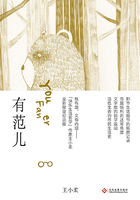These became part of that child who went forth every day, and who now goes, and will always go forth every day.
— Walt Whitman, "There Was a Child Went Forth" As a literary genre, the Bildungsroman generally deals with the idea of bildung, or formation, usually of a young man who through cultivation, education, character-shaping, either grows up by assimilating into the society smoothly, or stays at the threshold of the adulthood by hesitating to enter the society in a circular path.[1] This study uses the term "Bildungsroman" in the Yiddish meaning which is, in accordance with Bernard Sherman, identical to the German Bildungsroman and Erziehungsroman.[2] The term Bildungsroman was coined by Karl Morgenstern, an obscure professor of rhetoric, in his lecture "On the Spirit and Connection of a Series of Philosophical Novels" in the early 1820s with specif ic reference to Wilhelm Meister.
In the light of its ambiguity, Morgenstern's term did not gain currency until Wilhelm Dilthey,a famous German philosopher,stretched it in Das Erlebnes und die Dichtung(Poetry and Experience) in 1913.[3] He held that the Bildungsroman examines a "legitimate course" of an individual's development, each stage having its own specific value and serving as "the ground for a higher stage" , an upward and onward vision of human growth nowhere "more brightly and confidently expressed than in Goethe's Wilhelm Meister." [4] The reason why Dilthey designates the growth as "legitimate" is because it is natural process that children grow into youths, then into grown-ups who are ready to invest their talents in the love and work of the civil society they belong to. Accordingly, Dilthey stresses the close relationship between the growing protagonists and the society. Thus, the premise of Dilthean bildung is that the contradiction between the individual and society does not worsen further into hostility. And the final movement toward adulthood is that the protagonist finds his position in society and identifies himself with the world around him by way of rectifying his own faults, and perfecting his characters from the state of innocence about the life and society.
Apparently, Dilthey's successful bildung requires the existence of a social context that will facilitate the unfolding of inner capacities, leading the young person from ignorance and innocence to wisdom and maturity.Through careful nurturing, the protagonist should reach the point at which he can accept a responsible role in a friendly social community. Dilthey's ideal bildung is a journey of smooth and uncomplicated course in a harmonious and enabling social context for growth, as in Goethe's utopian Tower society.The distance between the ideal bildung and actual impossibility of ideal growing-up within a certain culture has led some critics to deny the value of the Bildungsroman as a literary genre, for not even the prototypical Wilhelm Meister seems fully to correspond to the theoretical ideal.[5] Susanne Howe[6] is most informative about the non-Goethean prototypes for the English Bildungsroman,in her study Wilhelm Meister and His English Kinsmen(1930),ranging from the Bunyanesque hero looking for salvation through a world peopled with allegorical representations of virtue and vice, to the picaresque-hero whose adventures take him instructively through various strata of society, to the quest-hero like Parsifal, who learns through painful experience how to reach his goal, and what his goal is worth.Susanne How's Bildungsheld(the hero of the bildung plot)stands not only for a synthesis of these various earlier heroes, but for modern, post-enlightenment youth in general, who is every young person. "Only in this light can we be very much by him. His enthusiasm and his confidence, his indecision and his errors, his sponge-like way of absorbing every influence to which he is exposed without profiting visibly thereby, his lack of humor — all these are vaguely touching only as youth are always touching, when it is not maddening." [7]
Howe's understanding of Bildungsroman has a further interpretation in Jerome Hamilton Buckley's Seasons of Youth:the Bildungsroman from Dickens to Golding.[8] Sharing the similarities of a happy ending with the classical Bildungsroman, Howe's and Buckley's researches on the English Bildungsroman contribute to the process of the protagonist's process of formation, which emphasizes that the provinciality hinders his free imagination and that the hegemony of the family represented by his father prevents him from realizing his ideals. These differences of the English Bildungsroman, as a bridge over the classical Bildungsroman and its American counterpart, prophesy the coming of the American Bildungsroman. However, Bildungsroman in American literature does not stray away from German tradition until Mordecai Marcus Americanizes it.[9] He uses anthropologically American "Initiation story" and "Novel of Initiation" as synonymic term of German Bildungsroman in "What is an Initiation Story? " in 1960.
In Marcus's Americanized definition of Bildungsroman, he combines the anthropological initiation rituals with the meaning of the Bildungsroman, putting emphasis on the initiation process from innocence to experience, or on recognizing oneself and the world through epiphanies. These definitions outline simply the development and variation of Bildungsroman from German to English and to American literatures, which sustain the idea of bildung in different ways. Comparatively, the Germans tend to focus attention on the individual's self-cultivation, while neglecting responsibility for the national culture. The English have tried, with marked success, to be attentive toward both: one's development as an I depends not only on the richness of one's inner life, but on the relations one has with the people —family, friends, acquaintances, and strangers — who constitute and share one's social environment. The American bildung is struck, in the early stage, somewhere between the German and the English, and surpasses later its predecessors and better expresses the throbs of the modern time.
The fictional form which reveals the experience of a Jewish youth who is undergoing his initiation into the American urban city has been called "the Jewish novel of education" by Jacob Sloan, who finds it inevitable that Jews should write such novels and defines the novel of education as "a journey of exploration in which traditional values are being considered, accepted, rejected, or transfigured." [10] Living the divided lives of American Jews themselves, writers like Ludwig Lewisohn, Delmore Schwartz, and Issac Rosenfeld, etc. have found this literary form to provide an appropriate structure for the inward-turning process which they have undergone.
As a special literary genre, American-Jewish Bildungsroman shares some close similarities to and reveal some significant differences from the classical, the Ethnic and the American Bildungsroman. The similarities may be assigned to the conditions that dictate the terms of all such novels, the difference to the singularities of the Jewish ethos. J. Tasker Witham summarizes four generalizations about novels with adolescent protagonists,[11] which are true of the American-Jewish Bildungsroman. Witham further proposes another set of generations for the adolescent novels of the Twenties and Thirties and those of the Forties and Fifties. He argues that novels of the Twenties and Thirties are likely to extend the action beyond the adolescence of the protagonist. The outset of puberty between twelve and sixteen for boys may be taken as the main sign of adolescence. Adolescent novels of this period are sociological in approach, whereas novels of the Forties and Fifties are psychological in orientation and cover a shorter period in the protagonist's life. The difference here is a major one. Most of the American Jewish novels of the Forties and Fifties continue a concern with societal circumstances almost equal in importance to the psychological. Furthermore, the Jewish novelists are more likely than the non-Jewish novelists to structure their treatment of the personality of the protagonist around family inter-relationships.
So, the family novel about the saga of generations forms the sub-group Bildungsroman within American Jewish literature. A very significant theme in the family novel is to explore the relationship within the family as an organism undergoing stress. The Jews are known for the importance they give to the family, and meanwhile, the family is often in conflict, which forms to a large extent the universal determinant of the Jewish novel. The Bildungsroman, with its inside view, affords an unequalled vantage point from which to observe the conflict of values that rent Jewish family life. In the better control of the Bildungsroman, family conflict is the nightmare wherein are reenacted the frustrations and shocks of the urban society. The hopes which bring the family to America are invested in the lives of the children, whose fulfillment, achieved through freedom from poverty and pogroms, is to repay the parents for the disruption of their own lives. Family tradition primarily charges the son with the obligation of achieving success; urban processes dictate that the price of that success is the abandonment of Jewish traditions. The sons who choose a literary career are in a unique position to explore every nuance of the clash of values between worlds, using the conflict as they do as the very means of gaining the fulfillment expected of them.
In Jewish fiction, the Bildungsroman as a genre is used in a two-fold way: first, to explore a youth's initiation into the adult world, and second, as a device to carry out an examination of spatial conditions. In the latter function, the youthful protagonist reacts like litmus paper, recording the effect on human personality of destructive spatial conditions all the more clearly because of his original innocence. Most of writers of the 20th Century American-Jewish Bildungsroman share the same ideology and employ the same literary device. The differences among novels within a group are due primarily to qualitative disparities among the writers. The use of Jewish themes and the return of the writer to his/her boyhood/girlhood may be often been as the artful employment of the materials for what they represent to the reader as well as the candid use of the material for what they represent to the writer. The Jewish character for its resonance as a stereotype or archetype is most apparent in two of its guises. The first is the young Jew with his Depression cry of why.In Waiting for the End(1964), Leslie Fiedler raises the figure to major significance: "The autobiography of the urban Jew whose adolescence coincided with the Depression, and who walked the banks of some contaminated city river with tags of Lenin ringing in his head…has come to seem part of the mystical life history of a nation." [12] The second of these central images is the alienated Jew, or existentialist sufferer, whose estrangement parallels the condition of the twentieth-century modern man.
Certainly, the details of these images of the Jew are not an issue of discussion here. The make-up of radical groups, occupational indices, religious affiliations, and psychological reports on the degree of anomie may or may not indicate that American Jews have lived a more complex life than the above stereotypes indicate. According to Dennis Wrong in "Jews, Gentiles, and the New Establishment," intellectually elite circles hold an image of the Jews which attributes to them: "intellectuality, political liberalism, intense parental solicitude with close bonds between mothers and sons… volubility and emotional expressiveness, fear of violence, and ironic humor." [13] These traits appear repeatedly in the Jew's image of himself in the novel. Unquestionably, the Jew does signify radicalism and alienation in cogent enough fashion to make his portrayal as such credible. The 20thCentury American-Jewish Bildungsroman customarily employs characters and situations of indisputable familiarity. It is a literature which repeats familiar strains, achieving art through variation rather than inventiveness. The variety of fictional styles and the differing premises — sociological, political, economic, psychological, satirical, comedic, and metaphysical — of American-Jewish Bildungsroman will be contrasted to its recurrent motifs which are: conflict of children with parents, of traditional religious values with American societal demands, and of life in the ghetto with life in the outer world. The repetition of dramatic situations in a succession of different literary styles which characterizes Bildungsroman suggests something of the vitality of the20thCentury American Jewish novel throughout the last half century.
The early 20thCentury American-Jewish Bildungsroman has more of classical hues, in which reconciliation and assimilation are the finale of almost all such novels, for the ultimate aim of the protagonist in the classical Bildungsroman is life within the larger community.Cahan's The Rise of Davis Levinsky can be taken as a typical example, the theme of which is the protagonist's reconciliation, guided by his lived experience, with concrete social reality. After his struggle for his formation, David realizes that the outsiders of the society seldom reach their goals, and that the material riches are actually granted by the society. However, David's reconciliation has its ethnic difference from the classical Bildungsroman which emphasizes, in Dilthey's definition, "the cultivation and harmonious development of the whole personality, the attaining of a goal that is happy blend of the material and spiritual." [14] The Bildungsroman as a genre is well suited for an exploration of the meaning of ethnicity because it focuses on the relation of a protagonist with the wider environment. The ethnic situation of the protagonist and the protagonist's community also gives account for another transformation wrought by ethnic authors. The traditional Bildungsroman has a tendency to see conflict as personal rather than societal and aims at a reconciliation of the protagonist with society.[15] Some ethnic protagonists, of course, reach that point of harmony with the environment through engaging themselves in the process of assimilation. The protagonists in The Rise of David Levisky,Fanny Herself and many other early American-Jewish Bildungsroman tend to blend into the mainstream environment, but at the price of renouncing their ethnicity. Maybe more typically, Hotle thus claims, "[s] ome writers … observe the opposite lesson; it is the dominant culture that keeps them out for reasons of class, ethnicity or race." [16] Accordingly, some critics have rightfully questioned the possibility of a protagonist reaching harmony in a society that is hostile to his or her ethnic identity. This feature of the ethnic Bildungsroman does not solely come into being as a literary choice but because of the status of ethnicity in society at large. This reality, usually considered open or subtle economic, political, and social inequalities and their psychological consequences, must be dealt with by the ethnic protagonist not as matter of choice, but because she or he has been put into that reality through the sociopolitical arrangement of society.
In light of ethnic Bildungsromane's reaction to an ethnic situation, critique of both the ethnic and the general environment becomes one of their important functions. Ethnic women protagonists negotiate both ethnicity and gender, as Esther Kleinbord Labovitz has noted, "the heroine of the female Bildungsroman challenge the very structure of society, raising questions of equality, not only of class, but of sexes, as well." [17] What may be called the ethnic transformation of the Bildungsroman consists, then, of a development away from the more exclusively personality-oriented plot of the traditional Bildungsroman and towards a more political and social vision. Jeffrey L. Sammons's open definition of the Bildungsroman genre focusing on bildung whether the process of bildung succeeds or fails, and whether the protagonist achieves an accommodation with life and society or not[18] gives room for this expanded vision of the genre, because a failed or problematic bildung might serve to indict the circumstances that make it problematic. Bonnie Hoover Braendlin thus defines the ethnic Bildungsroman as follows:
The Bildungsroman of … disenfranchised Americans… portrays the particular identity and adjustment problems of people whose sex or color renders them unacceptable to the dominant society; it expresses their struggle for individuation and a part in the American dream, which society simultaneously proffers and denies to them. This new Bildungsroman asserts an identity defined by the outsiders themselves or by their own cultures, not by the patriarchal Anglo-American power structure; it evinces a revaluation,a transvaluation,of traditional Bildung by new standards and perspectives.[19]
According to Braendlin's definition, the protagonist of ethnic coming-of-age stories strive for their bildung,they work on shaping their personalities, and often their social environment offers more hindrance than support, so that reaching harmony within a more or less hostile social order might be a tenuous proposition at best. Not to adjust to that order but to embrace ethnicity as the text outlines it and choose a more ethnically-oriented life rather than a career in the mainstream offers itself as one other alternative for the protagonist of the ethnic Bildungsroman. Disenchanted with mainstream life, the Jewish protagonist seeks some combination of the mainstream and the ethnicity for his chosen life course in The Rise of David Levinsky, Jews Without Money, Fanny Herself and other American-Jewish Bildungsroman. Ethnic Bildungsroman thus complicates the vision of what it may mean to adjust to an environment simply because the potential options have multiplied.
If the ethnicity is, more or less, the main tendency in the 20thCentury American-Jewish Bildungsroman before the Second World War, then the modernity in the post-war American-Jewish Bildungsroman is as apparent as in the American Bildungsroman, which is, to much greater extent, identical to the modern Bildungsroman. Different from the classical Bildungsroman which reflects epistemologically both the objective reality and the human nature, the modern American-Jewish Bildungsroman lays more emphasis on the inner world of human being, focusing on the description of the protagonist's mental agony and despair although such mental pains are necessarily presented within the framework of the social reality. In the classical Bildungsroman, the protagonist goes through a happy life journey in general though he may also encounter various setbacks in the process of development, and may often appear foolish as a learner. However, the subject in the modern American-Jewish Bildungsroman, or the American Bildungsroman, undergoes a torturous journey, in spite of the fact that he may enjoy some happy moments, or even have the possibility of being accepted by the society, as Augie in The Adventures of Augie March, or Holden in The Catcher in the Rye,or Portnoy in Portnoy's Complaint,and so on. These heroes place themselves either in the state of schizophrenia or become more uncertain about their future. It is just the uncertainty that endows the 20thCentury American-Jewish Bildungsroman with some features of modernity, even those of post-modernity. The alienated heroes with the ability to perceive the absurdity of their journey and the ills of the society, have a feeling of superiority to the adults and the society, and refuse in general to go into the adult society.
The American-Jewish Bildungsroman comprises an extensive body of literature, but comparatively little serious critical attention has been devoted to this genre. Generally, most researches have focused on such problems concerning Jewish aspects of experience as ethnic culture, religion, assimilation, alienation, Diaspora, cultural conflict, Zionism and so on. Accordingly,the theme of bildung,to some degree,becomes subordinate to the above-mentioned subjects.In 1954,Blanche Gelfant's The American City Novel, as a literary genre study, includes several American Jewish initiation novels, most of which fall under Gelfant's first mode, "the portrait study," aiming at study the plot of a series of "bildung incidents" impressing the hero with the meaning, values, and manners of the city.[20] Gelfant used the other two principal modes – "synoptic study," with its group hero, and the "ecological study, " with its exploration of the manner of life in a small area of the city,in Meyer Levin's The Old Bunch(1937), which follows a number of youths through the education experience. Fiedler in The Jew in the American Novel,applying the technique of the myth critic, lists the categories as: "Zion as Eros," the ghetto novels as the "erotic-assimilationist novel," which employs the mode of love story to dramatize the act of assimilation; "Zion as Armageddon," the proletarian novel; and "Zion as Main Street," the middlebrow novels.[21] The above groupings, overlapping as they do, indicate the feasibility of categorizing the American-Jewish novels in order to clarify the nature of the genre. Then, it is Bernard Aaron Sherman who, in his 1966 dissertation, makes a systematic study of the American-Jewish Bildungsroman. He uses the term "education novel" and groups the American-Jewish (Jewish-American by Sherman) education novels chronologically. He categorizes them in three groups from the first generations to the third generation, each group representing a school sharing common themes and style.
In general term,what is called the theme of bildung in the novel is the narrative construction of the process of the formation of the subject — the protagonist forms a self-sufficient frame of the spiritual character. This process is both temporal and spatial. And we have been much concerned with the study of the temporality, on account of which, this book is an attempt to employ concerned "spatial theories" to examine bildung from the individual to the subject in the 20thCentury American-Jewish Bildungsroman with such propositions as: (1) How and in what way the space as well as time is related to the subject's bildung; (2) How the body as a space (or the body of spatiality) enters into the constitution of the social life; (3) How space links internally to the Jewish people and participates in the construction of the Jewish subject's identity within the complicated social relations of ethnicity, gender, class, etc.; (4) How the 20thCentury American-Jewish Bildungsroman sheds light on the subject formation mechanism from the spatial perspective.
In so far as we discover the "mystery of the subject," the Bildungsroman is, so to speak, the most proper genre to reveal this mystic process of the formation from the individual to the subject. To the extent that the theory of space can be linked to the human bildung,perhaps Bakhtin is the f irst one to use chronotope to explore how time and space is related to the bildung in the Bildungsroman,though his bildung attaches much more importance to time than to space. It is maybe no surprise that people have laid more emphasis on,in the study of bildung,the time than on the space when the space is seen as "something dead, rigid, non-dialectic and still, while time is rich, productive, alive and dialectic." [22] In this regard, the "unchangeable" spatial world can not embody the dynamical process of growth from the childhood, through adolescent and adult period, to the old age. The traditional view of the still space, which enacts only as the background for the subject's bildung conf ines us to a limited vision,leaving us unable to explore the much more important function and significance of space than that of time in subject's initiation process. Socially and culturally, the 20thcentury has witnessed a spatial turn, and the "dead" space becomes now a dynamic one which is also produced in the society. "Social reality," remarks Soja, "is not just coincidentally spatial, existing 'in' space; it is presuppositionally and ontologically spatial.There is no unspecialized social reality(italics original). Even in the realm of pure abstraction, ideology, and representation, there is pervasive and pertinent if often hidden dimension." [23] With "spatial turn," we might as well admit that life experience show its more spatial experiences than temporal experiences, while it is not to declare that time has been "lost" in space, and much less in subject's initiation process.
Mike Crang and Nigel Thrift point dialectically out that "though part of the reason for the turn to space in many disciplines has been a drive to move away from the tyrannies of historicism and developmentalism, the fact remains that space without time is as improbable as time without space." [24] Mike Crang shows that space is not the opposite of time. Without time, there is no space, and without space, it is also impossible to talk about, or to perceive time. Lefebvre, all of whose thoughts are almost occupied by space, is even worried about the possibility that "time is reduced to the measure of social labor," and affirms that "time and space are not separable within a texture so conceived: space implies time, and vice versa," and that these spaces "are not closed, but open on all sides to the strange and the foreign, to the threatening and the propitious, to friend and foe." [25] The echoes of Heidegger are also very strong to time-space relationship. "Space contains compressed time. That is what space is for." [26] In the light of bildung,the spatial body is the best example of the integration of time and space or time of a space, which will be discussed in detail in the second chapter.
Therefore, this book does not exclude the temporal importance for the formation of the subject, though it focuses on the spatial functions, with which two considerations are formulated: For one thing, this spatial approach to the Bildungsroman, especially to the analysis of the protagonist's growth makes up for the fact that the spatiality of the bildung has been comparatively neglected in the academic and critical circles. This critical neglect is more obvious in the study of the American-Jewish Bildungsroman inasmuch as the other subjects like the identity, assimilation, religion, culture and so on so abundantly catch the eyes of the critics'. In the American Jewish writers' memories, their lives present more spatial experience, which are accompanied by their frequent spatial transformations and changes from Europe to America, from village to city, from one ghetto to another, and so on. Their rich and complicated spatial life experiences of growing up are in a large sense written into their works, especially into their autobiographies and autobiographical fiction, which shadow their protagonists with a strong spatial feeling of drifting in an alienated modern world. We can find abundant examples, such as David in Abraham Cahan's The Rise of David Levinsky,Sara in Anzia Yeaierska's Bread Giver,Mikey in Michael Gold's Jews Without Money,Augie in Saul Bellow's The Adentures of Augie March, Holden in J. D. Salinger's The Catcher in the Rye,just to list a few.
Manifold is the reason why the themes of bildung and its spatiality have been long-term neglected. Beyond the above-mentioned dominant subjects closely related to Jewish culture, religion, ethics, assimilation, alienation,identity, existence, Diaspora, Zionism, etc, among which the theme of bildung sometimes disperse,the American-Jewish Bildungsroman is often categorized into the American Bildungsroman, which overemphasizes the Americanized initiation but neglects the Jewish characteristics. It cannot be denied that the Bildungsroman of different people shares some similar characteristics such as a protagonist as a sensitive and unusually gifted young man, a tendency toward the inner life, a critical view of the world, the presentation of an individual development, an individual's confrontation with his environment, a self-formation according to internal purpose, a presentation of the universal within the process of a particular human life, etc.[27] However, the uniqueness of the Jewish people endows its literature unique characteristics with its unique spatial experiences, which can not be ignored in growth either as a people or as an individual, nor in the presentation from the protagonist's initiation into the society in the Bildungsroman.
For another, using spatial perspective to approach the subject's growth in the 20thCentury American-Jewish Bildungsroman sheds a new light on the interpretation of bildung with the advantage of "spatial vision." The process of the youth's initiation into society is seen in general as a difficult and painful but colorful and meaningful process, which has been discussed in the dimension of time. It is also well known that bildung is always accompanied with recollections, and because of which the process of initiation becomes unforgettable. Memory is temporal but simultaneously spatial, for what makes the memory meaningful is just because it is locked stably in the space. David Harvey tells us the functions of space on memory in the initiation process through Bachelard's works. "We think we know ourselves in time," writes Bachelard, and "when we all know it is a sequence of fixations in the space of being's stability." Memories "are motionless, and the more securely they are fixed in space, the sounder they are." [28] So, it is not simply the case that all spaces participate in the subject's growth, but only those in which the memories are eternally locked like home, ghetto for Jewish people, school, unban street and so on, which will be discussed in detail in Chapter Four.
In the light of the above two considerations, applying the spatial theories to the analysis of the subject formation in the 20thCentury American-Jewish Bildungsroman is feasible. Firstly, abundant theories about space in the works of Merleau-Ponty, Lefebvre, Foucault, etc. give the theoretical support. Some of these writers and social theorists (e.g. Lefebvre) are explicitly spatial in orientation. In other accounts by these theorists, space is an implicit operator which needs to be teased out (e.g. in Foucault's). Though there are few spatial theories relating directly to man's initiation into the world, what is very clear is that body as a space, which is the basic premise, is not considered by any of them to be outside of the realm of social practice. Merleau-Ponty's body as spatiality of situation shows that body is closely related to its spatial environment, and its spatiality is realized with the body's activities. The body's social action, in Lefebvre's term, is body's spatial practice which stretches and develops the body's space and entitles the body to the subject construction of self-consciousness and self-identity. Foucault's body is just the production of body's spatial practice, which trains, administers and teaches how to be a useful or proper body.
Secondly, man's initiation process from the childhood, through adolescent and adult period to the old age and finally to death, is the best embodiment of integration of time and space. After Lefebvre, no one has doubted that space is a socially produced set of manifolds. As a social production, human being as both a whole entity and an individual is bound to be spatial. Human being as a whole entity continues to advance from one space to another, from the earthly space to the outer space and so on in the long river of history, and as an individual grows up with spatial shift from home to society, from village to city, from one country to another, and many other frequent spatial movements in the axis of the age of time. So, life is indeed a stage, a place to perform the panorama of one's experiences. Then, in what state/space and age/time does a human show his/her grow-up? In accordance with Confucius, a human stands firm (state/space) at thirty (age/time).[29] Interestingly, the original Chinese word ( "li" ) for "stand" means, according to Xu Shen's (d.147 AD)Shuowen Jiezi,a "big" human standing on the earth(ground),[30] indicating a grown-up human(time) gets a social status by metaphorically positioning a place(space) in the society. Certainly, it is not simply the case that positioning a place can express the full implication of the subject's maturity. However, it can at least reveal the close relationship between the space and identity. That is, once you own a spatial position, you will to a large extent identify yourself with it.
Theory in this book is not applied for theory's sake, but for the micro-analysis of literary texts. Space, existing before human history, becomes so important in modern society under the auspice of Lefebvre's The Production of Space,that "it is the f lesh that f latters the bones of theory, (that) it is an all purpose nostrum to be applied whenever things look sticky, (and that) it is an invocation which suggests that the writer is right on without his/her having to give too much away." [31] After him, Sartre, Althusser, Foucault, Giddens, Harvey, Jameson have all devoted part of their studies to the exploration of space in the fields of philosophy, geography, sociology, history and even everyday life. However, these spatial explorations have little to do with the concrete literary textual analysis, and less with the initiation process of the literary figures. Here, what is mainly discussed in this thesis is how the space in the novel participates in the construction of the subject growth. Apparently, the space in literature is not completely tantamount to the space in the reality, nor is it to the spatial form by Joseph Frank[32] which takes space as a formal construct in the text and as a critical method of writing and reading the text. Lefebvre's triadic process is the main theoretical basis which consists of the relationships between "Spatial Practice," "Representations of Space," and "Representational Spaces." This spatial triad is in fact a unity, which describes how space is produced within society. When space is related to human's, especially Jewish youth's growing up, it is not completely coequal with Lefebvre's idea of the triadic relationship, of which spatial practice is a perceived space, representations of space is conceptualized, and spaces of representations lived. Here, spatial practice is still related to the repetitive routines of everyday places, and private life, but it is, in a large sense, an abstract process linking to the complicated relationships of ethnicity, gender, class, etc., while representations of space is the "real" lived space and representational spaces is a metaphorical and symbolic one, which is similar to Foucault's space of power, under the function of which the individual goes gradually and paradoxically into the subject.
Last, the intention of this research is not to be comprehensive, which would be an impossible task, nor is it a study of a single book or of a single author, which would not fully or objectively reflect the continuities and discontinuities of the identity with the temporal and the spatial changes. This paper, thus, would mainly cover the American Jewish writers of the first and second generations from the "new immigrants" of the 1880s to the 1950s, because the texts in this period can best demonstrate the combination of space, Bildungsroman and growth. Certainly in the sense of the experiences of Jews in America, the long period from 1654 to the last third of the nineteenth century is undoubtedly a necessary part of any valid generalizations about acculturation, assimilation, the crisis of identity, and the general background of literature written by American Jews, but the many generations that preceded the "new immigration" produced little in the way of literature per se.American Jews, since their arrival as the "new immigrants" from Eastern Europe, have made great contributions to American literature.So the f irst work in this paper is Abraham Cahan's The Rise of David Levinsky(1917),one that dramatizes the exodus from Czarist Russia. Other important books of different generations selected, including Michael Gold's Jews Without Money(1930),Alfred Kazin's A Walker in the City(1946),Saul Bellow's The Adventure of Augie March(1953),Issac Rosenfeld's Pasaage from Home(1961),Philip Roth's Portnoy's Complaint (1970), etc., and some American Jewish women Bildungsroman like Mary Antin's The Promised Land(1912);Anzia Yezierska's Bread Giver(1925);etc., with the consideration of the specialty of American Jewish women's gender and space. Though largely a literary analysis, this dissertation is not concerned with all American Jewish writers who have been identified as Jews or with all the works of the writers I discuss. Many minor writers, who wrote their autobiographically Bildungsroman in alienated space, are referred to in passing or are neglected entirely when there are ample illustrations for the main lines of argument.
A further word for these books selected for discussion is the language. Some of above-mentioned writers like Abraham Cahan wrote in Yiddish as well as in English, I should therefore like to state clearly that at the outset I am concerned with American-Jewish Bildungsroman written in English. For this reason, some important writers, most notably Issac Bashevis Singer, are excluded though they may be mentioned for the purpose of comparison or for their influence on American Jewish writers in English. Additionally, some writers like Nathanael West, Arthur Miller, J. D. Salinger are, of course, nominally Jews, but they are excluded usually out of the family of Jewish writers, for they are in no important sense "Jewish" writers, and nor their work deal significantly with the process of assimilation and the resultant crisis of identity. On the problem of what is Jewish literature, I am more inclined to consent to Hana Wirth-Nesher's simplest definition — "literature written by Jews." This simplest definition for identifying Jewish literature is perhaps the least satisfactory, but "such a reductive approach, by its indiscriminate inclusiveness and its biological determinism, begs the question of what constitutes Jewish culture as a matrix for Jewish literary texts." [33]
This book falls into six parts including four chapters plus an introduction and a conclusion. The introduction provides a literature review of different definitions of Bildungaroman and a comparative analysis of the similarities and differences among the classical Bildungsroman, the American Bildungsroman and the American-Jewish Bildungsroman. It also examines the attributes of tradition, ethnicity, and modernity in the American-Jewish Bildungsroman, providing a lay-out of the whole dissertation.
Chapter One outlines and categorizes, by examining its origination and development chronologically, the American-Jewish Bildungsroman into three groups: the early realistic ghetto Bildungsroman of the first generation, depicting the hardness and inadaptability and the process of assimilation of the first Jewish immigrants from Eastern Europe; the flourishing and diversification phase of the second generation falling into the Bildungsroman of the Depression, alienation, American Dream and nostalgia; and the Black-humor Bildungsroman of the third generation, which retrospects and ironizes with more American and modern tinctures the conservativeness, hypocrisy, absurdness and ridicules in the Jewish people's life.
The second chapter examines how "growth" is relevant to time and space in the Bildungsroman. Body's growth is, undoubtedly, bounded in time and space, and its time is a spatialized cycling one, revealing the life span of a man from the childhood to youth and adulthood, then to the old age. Mikhail Bakhtin names the individual's growth time "biographical time" , which is included into the historical time. Space, frequently haunting in Jewish people's memory, is more significant than time for the Jewish people. It is spatial "duration," that emphasizes the continuous streaming and stretching in the consciousness and mind. Reflecting the interlocking factors of gender, race and class, Jewish subject "formats" its identity by dialogue and performance in the social spaces in which the subject moves about.
Chapter Three explores three spatial patterns of subject formation on the basis of relevant spatial theories. The first is "gendered subject through performing in spatial shift," that is, how the subject finds its sexual identity by fleeing from one space and intruding into another. The second is "raced subject through passing in spatial expansion," i.e., how the Jewish subject metamorphosizes by passing over into the "white" world. The third is "self-formation through release of psychological space" — how the subject releases its psychological anxiety through fragmental memories and self-dialogue to adjust and form itself.The texts include mainly The Rise of David Levinsky, Passage from Home, A Walker in the City, The Adventures of Augie March,and Portnoy's Complaint,etc.
The last chapter discusses the spatial logic of subject formation on the basis of Lefebvre's triadic space, Foucault's heterotopia, and other related spatial concepts. The spatial logic is, to a large extent, similar to Lefebvre's progress of space production, which consists of spatial practice, representations of space, and representational spaces. Escape and intrusion forms the logic of the bodily spatial behavior, that is, how the subject forms by performing its body to cater for the spatial norms. The typical spaces of representation concerning with the protagonist's growth in the 20thCentury American-Jewish Bildungsroman mainly involve ghetto, Jewish family or school and urban spaces which trace spatially the subject initiation process as well as interact all kinds of social powers. Ghetto, as a living and dreaming space of childhood, is the subject's scratch line of growing up. It, as a real and imaginary space, is a heterotopia of culture and constructs the subject's identity anxiety. The Jewish family and school, as the center of contradiction between tradition and modernity, and conservativeness and reformation, is a space of alienation, "other," and dediscourse, which intensifies the subject's spatial anxiety. It is, meanwhile, a paradoxical space for subject's fleeing and homing. The urban city, as a representation of open and free space, symbolizes the space of spiritual carnival, in which the subject either "grows up" by passing over into the white world or gets lost by standing on the cross of tradition and modernity.
The conclusion is devoted to the aesthetical and epistemological analysis of the spatiality of the "growth" in the 20thCentury American-Jewish Bildungsroman. Spatiality of bildung draws "growth" out of the chronological sequence and presents a stereoscopic aesthetical effect.
NOTES
[1] "It(Bildungsroman)portrays the Bildung of the hero in its beginnings and growth to a certain stage of completeness; …further[ing] the reader's Bildung to a much greater extent than any other kind of novel." (Qtd in Martin Swales.The German Bildungsroman from Wieland to Hesse.Princeton:Princeton University Press,1978,p.12.)
[2] Critics refer to other two near relations of the Bildungsroman. One is the Erziehungsroman, the novel of education, which is explicitly and pointedly pedagogic; the other is the Entwicklungsroman, novel of personal development, which is about the evolution of a hero from any one stage of life to another. The Bildungsroman is between the two terms, not as narrowly pedagogic as the Erziehungsroman being about general acculturation, and not so merely transitional as the Entwicklungsroman being about the early childhood-to-young-adulthood stages of life.
[3] Wilhelm Dilthey thus defined the Bildungsroman as: A regulated development within the life of the individual is observed; each of its stage has its own intrinsic value and is at the same time the basis for a higher stage. The dissonances and conflicts of life appear as the necessary growth points through which the individual must pass on his way to maturity and harmony.
[4] Wilhelm Dilthey.Das Erlebnis und die Dichtung:Lessing,Goethe,Novalis,Holderlin. Gottingen: Vandenhoeck and Ruprecht, 1921, p. 250.
[5] See Jeffrey L.Sammons. "The Mystery of the Missing Bildungsroman,or:What Happened to Wilhelm Meister's legacy? " Genre 14(Summer 1981),pp.229-246.
[6] Susanne Howe outlines this type: The adolescent hero of the typical "apprentice" novel sets out on his way through the world, meets with reverses usually due to his own temperament, falls in with various guides and counselors, makes many false starts in choosing his friends, his wife, and his life work, and finally adjusts himself in some way to the demands of his time and environment by finding a sphere of action in which he may work effectively… Needless to say, the variations of it are endless.(Susanne Howe.Wilhelm Meister and His English Kinsmen:Apprentices to Life.New York:Columbia University Press,1930,p.4.)
[7] Susanne Howe. 1930, p. 64.
[8] Buckley generalizes the English Classic Bildungsroman as follows: A child of some sensibility grows up in the country or a provincial town, where he finds constraints, social and intellectual, placed upon the free imagination. His family, especially his father, proves doggedly hostile to his creative instincts or flights of fancy, antagonistic to his ambitious, and quite impervious to the new ideas he has gained from unprescribed reading. His first schooling, even if not totally inadequate, may be frustrating insofar as it may suggest options not available to him in his present setting. He therefore, sometimes at a quite early age, leaves the repressive atmosphere of home, to make his way independently in the city. There his real "education" begins, not only his preparation for a career but also—and often more importantly—his direct experience of urban life. The latter involves at least two love affairs or sexual encounters, one debasing, one exalting, and demands that in his respect and others the hero reappraise his values. By the time he has decided, after painful soul-searching, the sort of accommodation to the modern world he can honestly make, he has left his adolescence behind and entered upon his maturity. His initiation complete, he may then visit his old home, to demonstrate by his presence the degree of his success or the wisdom of his choice.(Jerome Hamilton Buckley.Seasons of Youth:The Bildungsroman from Dickens to Golding.Cambridge:Harvard University Press,1974,pp.17-18.)
[9] Marcus's definition is: Marcus's definition is: An initiation story may be said to show its young protagonist experiencing a significant change of knowledge about the world or himself, or a change of character, or of both, and this change must point or lead him towards an adult world. It may or may not contain some form of ritual, but is should give some evidence that the change is at least likely to have permanent effects.(Mordecai Marcus. "What is an Initiation Story? " William Coyle(ed.)The Young Man in American Literature:The Initiation Theme.New York:The Odyssey Press,1969:32)
[10] Jacob Sloan. "The Jewish Novel of Education." The Reconstructionist, XXV,No.7(May 15, 1959), pp. 15-20.
[11] The four generalizations are: (1) the majority are first novels; (2) they are autobiographical;(3) most deal with males and in a frank manner; (4) the protagonist is a sensitive would-be artist of some kind. (J.Tasker Witham.The Adolescent in the American Novel. New York:Frederick Ungar Publishing Co., 1964, p. 56.)
[12] Leslie Fiedler.Waiting for the End.New York:Stein and Day,1964,p.65.
[13] Dennis Wrong. "Jews,Gentiles,and the New Establishment," Commentary, XXXIX,6(June, 1965), p. 86.
[14] G. B. Tennyson. "The 'Bildungsroman' in Nineteen Century English Literature," Janet Mullane et al.(eds.)Nineteen Century Literature Criticism.Vol.20.Detroit:Gale Research Inc.,1989, pp. 143-147.
[15] Goethe's definition of Bildung in Wilhelm Meister, the prototype of the Bildungsroman, discusses the idea of reciprocal growth or change in which the individual and the environment are engaged in a process of mutual transformation, each shaping the other until the individual has reached the point where he or she experiences a sense of harmony with the environment. (Susan Ashley Gohlman.Starting Over:The Task of the Protagonist in the Contemporary Bildungsroman.New York:Garland,1990,p.X.)
[16] James Hotle. "The Representative Voice:Autobiography and Ethnic Experience," MELU 9 (1982), pp. 35.
[17] Esther Kleinbord Labovitz.The Myth of the Heroine:The Female Bildungsroman in the Twentieth Century.New York:Lang,1986,p.25.
[18] See Jeffrey L. Sammons. "The Bildungsroman for Nonspecialists: An Attempt at a Clarification," James Hardin (ed.)Reflection and Action:Essays on the Bildungsroman. Columbia, SC: University of South Carolina Press, 1991, p. 41.
[19] Bonnie Hoover Braendlin. "Bildungsroman in Ethnic Women Writers," Denver Quarterly 17.4 (Winter 1983), p. 75.
[20] Blanche Gelfant.The American City Novel. Norman, Okla.: University of Oklahoma Press, 1954, p. 11.
[21] Leslie Fiedler.The Jews in the American Novel.New York:Herzl Institute Pamphlet No.10, 1959.
[22] 转引自童强《空间哲学》,北京大学出版社,2011。空间在以往被当作僵死的、刻板的、非辩证的和静止的东西。相反,时间却是丰富的、多产的、有生命力的、辩证的。
[23] Edward W.Soja.Thirdspace:Journeys to Los Angeles and Other Real-and-imagined Places. Blackwell Publishing, 1996, p. 46.
[24] Mike Crang and Nigel Thrift(ed.)Thinking Space.London and New York:Routledge,2003,p.1.
[25] Heri Lefebvre.The Production of Space. Trans. Donnald Nicholson-Smith. Blackwell Publishing, 1991, pp. 118, 324.
[26] Quoted in David Harvey.The Condition of Postmodernity:An Inquiry into the Origin of Culture Change.Cambridge MA&Oxford OX:Blackwell Publishing,1990,p.217.
[27] See Randolph P. Shaffner.The Apprenticeship Novel:A Study of the "Bildungsroman" as a Regulative Type in Western Literature with a Focus on Three Classic Representatives by Goethe,Maugham,and mann.New York:Peter Lang Publishing Inc.,1984,pp.17-19.In this book, Shaffner detailedly list thirty-six traits all together, which suggest concrete potentialities within the apprenticeship novel.
[28] David Harvey.The Condition of Postmodernity:An Inquiry into the origin of Culture Change. Cambridge MA & Oxford OX: Blackwell Publishing, 1990, p. 217.
[29] 子曰:吾十有五而志于学,三十而立。参见《论语·为政》。
[30] 立:住也。从大立一之上。参见许慎《说文解字》。
[31] Mike Crang and Nigel Thrift (ed.), 2003, p. 1.
[32] The term "spatial form" was first employed by Joseph Frank, a professor of comparative literature and director of the Christian Gauss seminars in criticism at Princeton University, in his article "Spatial Form in Modern Literature." This idea originated in his analysis of Djuna Barnes's Nightwood, in which he found a crucial technique — the substitution of spatial relationships for temporal progression as a formal metaphor of thematic development in the modernist literature.
[33] Hana Wirth-Nesher(ed.)What is Jewish Literature?Philadelphia: The Jewish Publication Society, 1994, p. 3. In the introduction titled "Defining the Indefinable: What is Jewish Literature? " of this book, Hana Wirth-Nesher points out that every other attemptive definition of what is Jewish literature may be challenged with counterexamples like biological definition, linguistic definition, definitions of themes of Jewishness, Jewish ethics, religiosity, etc. (See pp. 3-4.)














